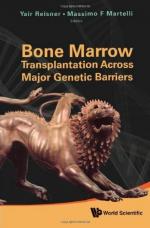|
This section contains 1,034 words (approx. 4 pages at 300 words per page) |

|
World of Genetics on George David Snell
Geneticist George David Snell's pioneering research on the immune system in the 1930s and 1940s enabled medical science to develop the process of organ transplantation. Through skin grafts performed on mice at the Jackson Hole Laboratory, he discovered the factor (known as histocompatibility) that enables doctors to determine whether organs and tissues can be successfully transplanted from one body to another. Snell's research earned him the 1980 Nobel Prize for medicine or physiology.
One of three children, Snell was born in Bradford, Massachusetts, to Cullen Snell and the former Kathleen Davis. Snell's father developed and manufactured many inventions, including a mechanism for starting motorboat engines. In Snell's fifth year, the family moved to Brookline. Snell's interests while growing up were varied, and included science, math, sports, and music.
After enrolling at New Hampshire's Dartmouth College in 1922, Snell was influenced to major in biology after taking a genetics course taught...
|
This section contains 1,034 words (approx. 4 pages at 300 words per page) |

|


